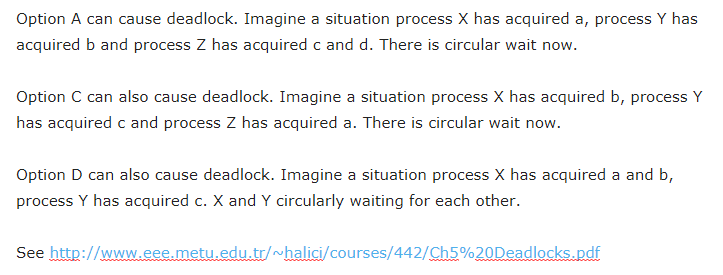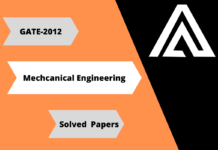Q. 16 Three concurrent processes X, Y , and Z execute three different code segments that
access and update certain shared variables. Process X executes the P operation
(i.e., wait) on semaphores a, b and c; process Y executes the P operation on
semaphores b, c and d ; process Z executes the P operation on semaphores c
, d , and a before entering the respective code segments. After completing the
execution of its code segment, each process invokes the V operation (i.e., signal)
on its three semaphores. All semaphores are binary semaphores initialized to one.
Which one of the following represents a deadlock-free order of invoking the P
operations by the processes?
(A) X: P(a)P(b)P(c) Y: P(b)P(c)P(d) Z: P(c)P(d)P(a)
(B) X: P(b)P(a)P(c) Y: P(b)P(c)P(d) Z: P(a)P(c)P(d)
(C) X: P(b)P(a)P(c) Y: P(c)P(b)P(d) Z: P(a)P(c)P(d)
(D) X: P(a)P(b)P(c) Y: P(c)P(b)P(d) Z: P(c)P(d)P(a)
Answer: (B)
Explanation:














